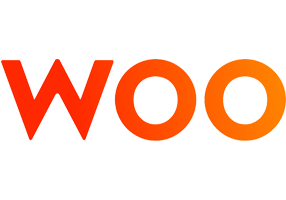Now that #EqualPayDay has come and gone, everyone can get on with forgetting about the gender pay gap for another year.
But when it comes to female programmers, there’s more than the STEM pay gap that needs to be addressed.
One of the greatest challenges today is breaking down a stereotype that’s harmful not just to programmers (of both genders), but also to any tech company looking to succeed: the idea that what makes for a good software developer is a geeky, male, antisocial type.
At least history is on our side for a change with this one: women were among the pioneers in computer science.
Shocker?
It shouldn’t be. It’s high time for women to come reclaim their rightful place in the industry, after being sidelined long enough.
The women no one talks about
Many books (such as Hidden Figures by Margot Lee Shetterly and Brotopia by Emily Chang) have documented female excellence in computer science, before attempts to shove them aside.
Yet most people are still surprised to learn of women’s crucial role in programming history.
The women at the forefront of the industry were bright, analytical problem solvers that developed technologies such as building the first computer (Eniac), creating the spread-spectrum communication technology that now powers Wi-Fi and cell phones, and writing several programming languages, to name just a few accomplishments.
From Ada Lovelace, the world’s first computer programmer, who wrote the first line of code in the 1840s, through Susan Wojcicki, the Google developer that helped build AdWords and AdSense, which bring in the lion’s share of Google’s $100 billion revenues, there have been many talented female developers in between.
Let’s set the record straight about the history of women in programming: when Cosmopolitan famously reported about the “Computer Girls” in 1967, and promoted the idea that “Women are ‘naturals’ at computer programming,” they were not attempting to promote STEM female leadership.
As Chang describes in Brotopia, programming at that time was considered undesirable, low-level work: “The term “programmer” had a negative connotation, at least among men, as women’s work—similar to operating a telephone switchboard or being in a typing pool.”
So the female inventors designing the radars were really doing so under the radar, until they were pushed out of the field.
How women were pushed out of programming
Ongoing socialization of girls and women to pursue lower-paid, less desirable positions in the workforce combined unfavorably with a skewed 1960’s study of male-only programmers as subjects, which equated the ideal software engineer with awkward and antisocial tendencies.
The results of this study entered mainstream thought, and contributed to steering girls away from developing the math skills that could help them become great programmers.
Girls that pursued these subjects notwithstanding, later faced discriminatory hiring practices and unpleasant, boys’ club-style working environments.
Female enrollment in computer science bachelor’s degrees finally peaked at 37% in the early 1980’s, and has since fallen considerably.
This led us to where we are today, with Chang describing how “at a time when a degree in computer science guarantees a six-figure job offer to any young person with a modest intellect and a willingness to live in the Bay Area, women earn just 17.5% of bachelor’s degrees in computer science. That percentage has remained flat for a decade.”
Grooming the new female programmer
Organizations such as Girls Who Code and the Girl Scouts are currently doing their part to correct the bias among young people, and giving girls the educational tools necessary to reach their potential as the next top software engineers.
However, we don’t have to wait for these girls to matriculate.
There are already exceptional female developers active in the workforce today, who possess the knowledge and skills deserving of their positions, and deserving of compensation at the going rates for qualified developers.
Female coders, hackers, and engineers in the industry today need to know that by embracing their potential and seeking out (and landing) a job matching their worth, they are actively changing the outdated, male-centric software engineering field.
What the world needs today, overwhelmingly, is female role models to break the glass ceiling and continue developing the coding skills, as well as the leadership and C-level skills, to reclaim their rightful place at the cutting edge of their field.



